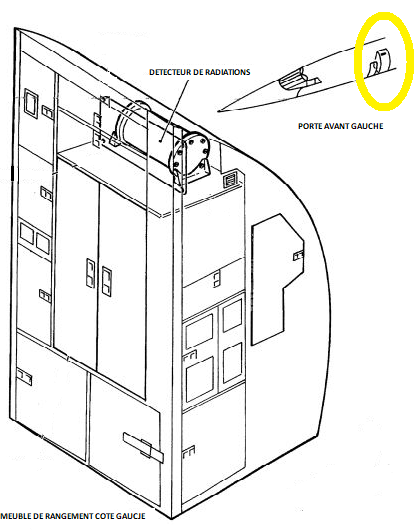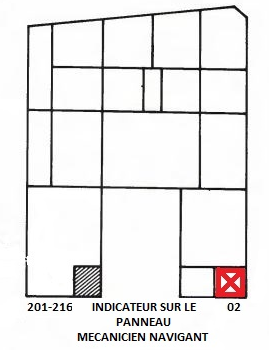RADIATION INDICATOR
- museedelta
- 6 déc. 2021
- 3 min de lecture
Supersonic transport aircrafts fly at higher altitudes than planes currently in operation and only benefit from a third of the atmospheric layer to protect them from radiation.
As a result, a supersonic aircraft encounters a high level of radiation.
To protect passengers and crews, a detection device was installed on board Concorde’s.
Here is a quick overview of this equipment and the location of the detector and radiation indicator that is visible in the cockpit.

Radiation is of two types:
- Galactic radiations
These are second-zone radiations existing in a permanent state. Their dosage is estimated at one billion per hour. Therefore this dosage do not concern of operational aspect.
- Proton radiation emanating from solar flares.
Solar flares cause a sudden increase in the level of radiation. These rashes are not uncommon, for example: 300 rashes in a period of 27 days is common. However, at other times, months can go by without a single rash occurring. Eruptions generate X-rays, radio waves, solar plasma waves and energetic solar protons. The solar protons are the ones we need to be concerned about.
Radiation detection
The radiation detection and alarm system detects the level of cosmic radiation inside the aircraft and warns the crew when the intensity exceeds a certain level. The level of radiation is detected on an indicator.
Detection device
Located inside the crew storage compartment, it includes
- a power supply unit,
- two detection channels,
- a signal adapter,
- two level detectors for direct current, for high and low level,
- a radiation source detection module capable of testing Geiger-Muller tubes.
Indicator
The radiation indicator is located:
- at the lower part of the left leg of the mechanics panel on production airplanes.
- at the lower right part of the mechanics panel in the SA
Here is the replica of the indicator made by Maxime for the SA.

A numerical meter graduated in millirems is located at the bottom of the indicator.
Short description "how it works"
The contamination rate needle moves in front of a dial graduated from 0 to 20.
The first 10 graduations (green area)
- correspond to readings of 0 to 10 millirems
Graduations from 10 to 15 (amber range)
- correspond to readings of 10 to 100 millirems
The graduations from 15 to 20 (red area)
- correspond to readings of 100 to 1000 millirems.
When the needle is within (amber range) the amber alert light will illuminate on the indicator.
When the needle passes in the (red range) the red indicator light (action) of the indicator lights up, the red RAD'N alarm of the central alarm panel lights up at the same time as the audible alarm is triggered.

On the master warning panel of the SA

Here is a descriptive diagram

In-flight procedure
Elimination of the red light and the triggering of the corresponding warning during cruising flight implies the obligation to change the flight level until these warning disappear.
Possibility of testing
To carry out a proper functioning test, the detection device is fitted with a test radiation emitter, which comprises a source of Strontium 90 beta radiation in a protective box fitted with a shutter.
The radiation indication system test can be performed by pressing the test button located at the top right of the indicator.
This action opens the shutter to expose the detectors for this test to radiation and moves the needle to the red range and triggers the corresponding warning.
And on our plane
The detection assembly located in the front galley was dismantled in 1976 when the aircraft was fitted out by Air France for ADP guided tours.
The indicator in the cockpit, the only visible element in the aircraft, was rebuilt by Maxime and installed in the original position.
Note: REM takes its name from the abbreviation "Röntgen Equivalent Man" a unit of radiation dose.























Commentaires